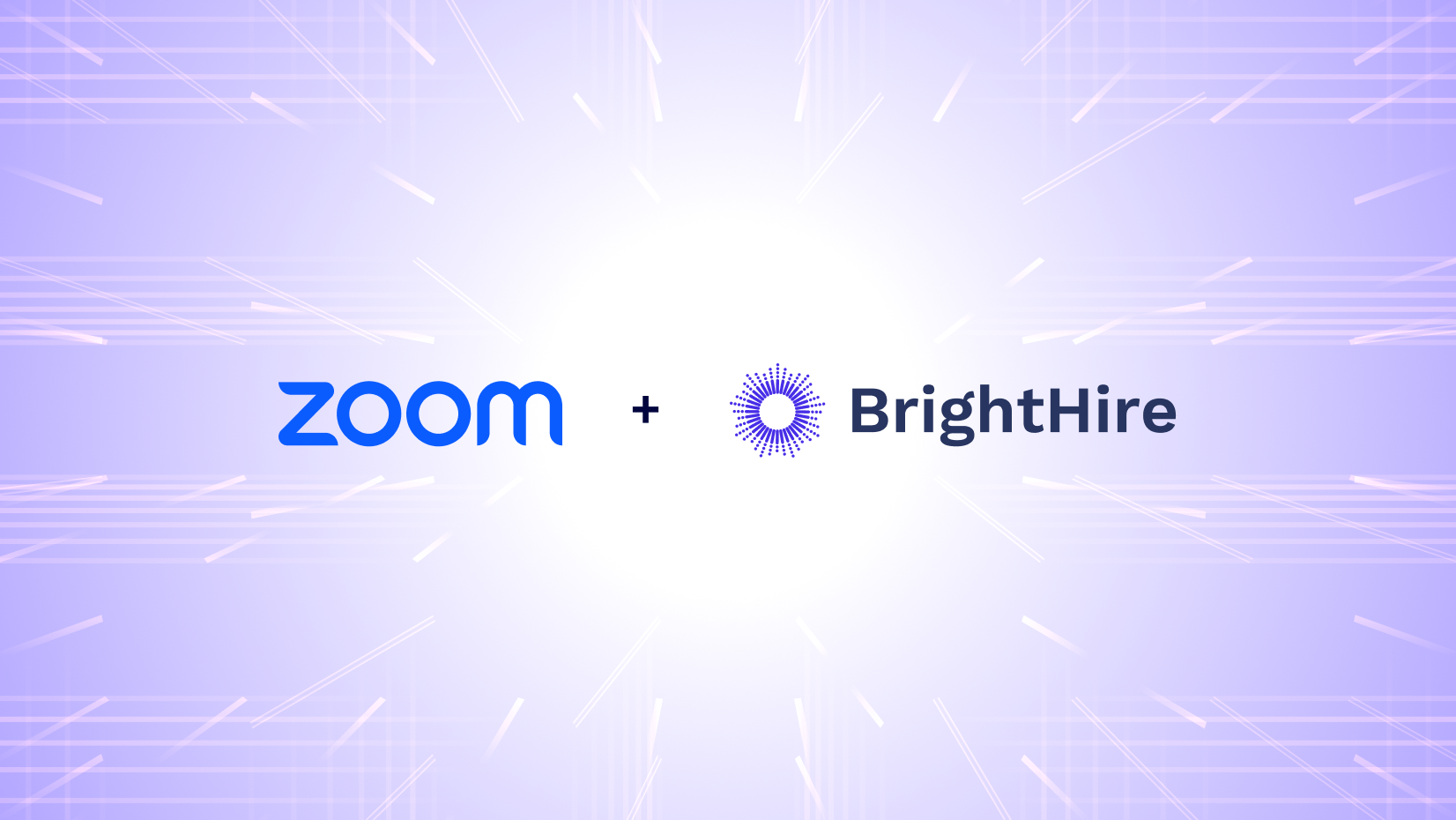
Zoom acquires BrightHire, adding AI-powered hiring lifecycle capabilities to Zoom Workplace
Broadens Zoom’s AI-first platform with intelligent interview capabilities for millions of hiring conversations.
Updated on July 24, 2023
Published on June 08, 2023

When Kelsie Colley, a people research consultant at Zoom, was job hunting in December 2022, she applied only to remote positions. But she wasn’t just looking for any remote role — she wanted to work for an organization where engagement was measured in more ways than if your video camera was on during a meeting.
Kelsie, who is autistic and has ADHD, finds that having her camera on for all meetings can sometimes give her a feeling of cognitive or social overload. In addition to monitoring social and technical information from others, self-monitoring can become exhausting. “It’s like being hyper-aware of myself, or having Zoom fatigue,” she said.
She found the flexibility she needed here at Zoom. “People here understand I can be fully engaged on the occasions when I have my camera off, and they encourage me to take care of myself so I can execute on job-specific tasks,” she said. “I still have a full range of options to communicate other than my facial expressions — I can talk, I have my chat open, I can react with emojis, put my hand up, use an avatar.”
Within her first week on the job, Kelsie began talking with other colleagues about setting up a community around neurodiversity. They created a chat channel called Neuro @ Zoom, where neurodivergent and neurotypical people could have conversations about creative ways to navigate work and advocate for every Zoomie’s success in their job.
“It’s about myth-busting and countering the narrative that there is only one right way to get to the same outcome,” Kelsie said.
It’s also become a hub for ideas on how to support neurodivergent Zoomies through our platform as well as our practices — and extend that knowledge to create a more neuroinclusive experience for Zoom users around the world.
Neurodiversity recognizes that all people experience the world in different ways and seeks to make sure that neurodivergent people are represented within a group. Neurodivergence can refer to anyone differing in cognitive or sensory function from what is considered “typical,” including autistic people, people with ADHD, dyslexia, dyspraxia, and other experiences.
For the Neuro @ Zoom community, neurodiversity is an essential step toward neuroinclusion, which is all about creating a workplace that sees and welcomes the diverse ways that employees think and engage with their world. This is critical for any team’s success.
For instance, measuring employee engagement or performance by traditional markers can inadvertently penalize neurodivergent employees. Someone might be passed over in the hiring process or excluded from promotion opportunities because they don’t make eye contact and smile, or speak up a lot in meetings.
Part of working toward neuroinclusion involves being aware of those biases and understanding that they aren’t necessarily true — for instance, actions like eye contact do not predict job success or interest in the job itself. Having awareness of these biases and preconceived notions gives our teams the ability to address them, so neurodivergent employees aren’t impacted unfairly.
Neuroinclusion also involves giving people the tools and means to be productive and successful in their role. Kelsie brought up the practice of creating meeting agendas as an example. Some neurodivergent people may have trouble processing information in the moment, and a detailed agenda can help them participate more fully by allowing them to prepare ahead of time.
“During my onboarding, we talked about how every meeting should have an agenda,” Kelsie said. “This policy that gets shared with all Zoomies when they onboard is actually a great first step to make meetings more neuroinclusive.”
But not all meeting agendas are created equal. For many people, an agenda is an afterthought, put together in a few minutes without much detail other than the topics being covered. Kelsie emphasized that a high-quality agenda should clarify the importance of the meeting and phrase the discussion points in ways that get people engaged and thinking creatively about how they can contribute.
Creating a neuroinclusive workplace takes more than policies and practices — it’s also about the products we design and use on a day-to-day basis.
“Our approach to accessibility focuses on making sure everyone can use the Zoom platform to communicate and achieve their goals, regardless of their age or ability,” said Alex Mooc, Zoom’s head of accessibility. “Zoom’s simplicity and ease of use are important for those who are neurodivergent, or those who have cognitive or non-apparent disabilities.”
“Many features and functionality of the Zoom platform are inherently neuroinclusive, and we are only getting better,” Kelsie noted. “I can adjust the product to my needs at the moment, and ask others to do the same.”
For example, neurodivergent Zoomies have said that Zoom’s avatar feature lets them express themselves without the pressure of being on camera. That’s because avatars mirror their movements and facial expressions, which are more dynamic than a static profile picture, and they can be customized to reflect their own style and personality.

“My colleagues might want a higher visual experience when meeting with me,” Kelsie said. “On days when I want my camera off, I can turn on my avatar and provide my teammates with the experience they may prefer to drive collaboration.”
Reactions and nonverbal feedback, like the raise hand feature or emojis, also allow people who may leverage off-camera communication to show they’re present, listening, and engaged.
The choice to remain off camera has several advantages for neurodivergent people. For one, it relieves the pressure that some might feel to “mask,” which is a term for acting in ways to appear more neurotypical, even if it means hiding their own natural ways of working or thinking. Masking can affect creativity and innovation — if employees are more worried about fitting in than engaging with work, they may not contribute their intellect and ideas to their team.
Those who engage in stimming behaviors (short for self-stimulation) to help them manage their emotions and stress might force themselves to suppress repeated behaviors like rocking, hand flapping, or clearing their throat during a face-to-face conversation. But when supported with a range of camera-off options, people can choose to stim without fear of judgment or misunderstanding from others.
Some people find that the visual nature of video meetings can be overwhelming. The ability to hide self view or stop all incoming video can give neurodivergent people a much-needed visual break so they can focus on the conversation. And for those who have trouble with auditory processing, automatic captioning can help them understand what’s being said in the moment while post-meeting transcripts allow them to revisit the conversation later.
Organizations reap the benefits of a neurodiverse workforce, which encompasses employees with different talents and abilities. When employees feel welcomed and valued for their differences, it leads to higher levels of satisfaction and retention. Employees can also be more productive when they’re given the support they need to thrive.
If you want to create more inclusive meetings, here are a few tips to start:
Providing greater flexibility and different options for communicating allows everyone to choose what works best for them, creating a more accessible workplace for all.
For more accessibility tips, check out our accessibility course on Zoom Learning Center.